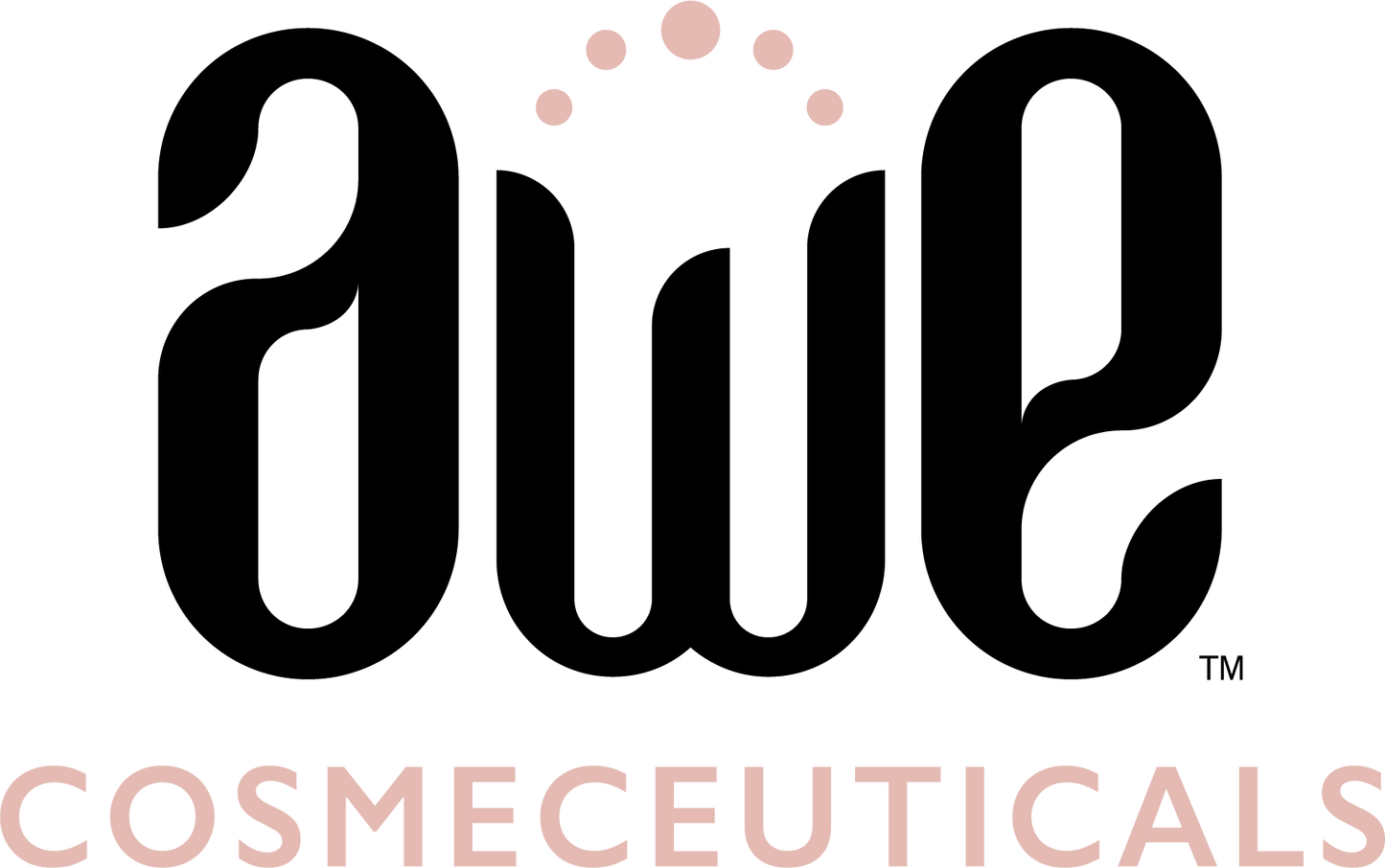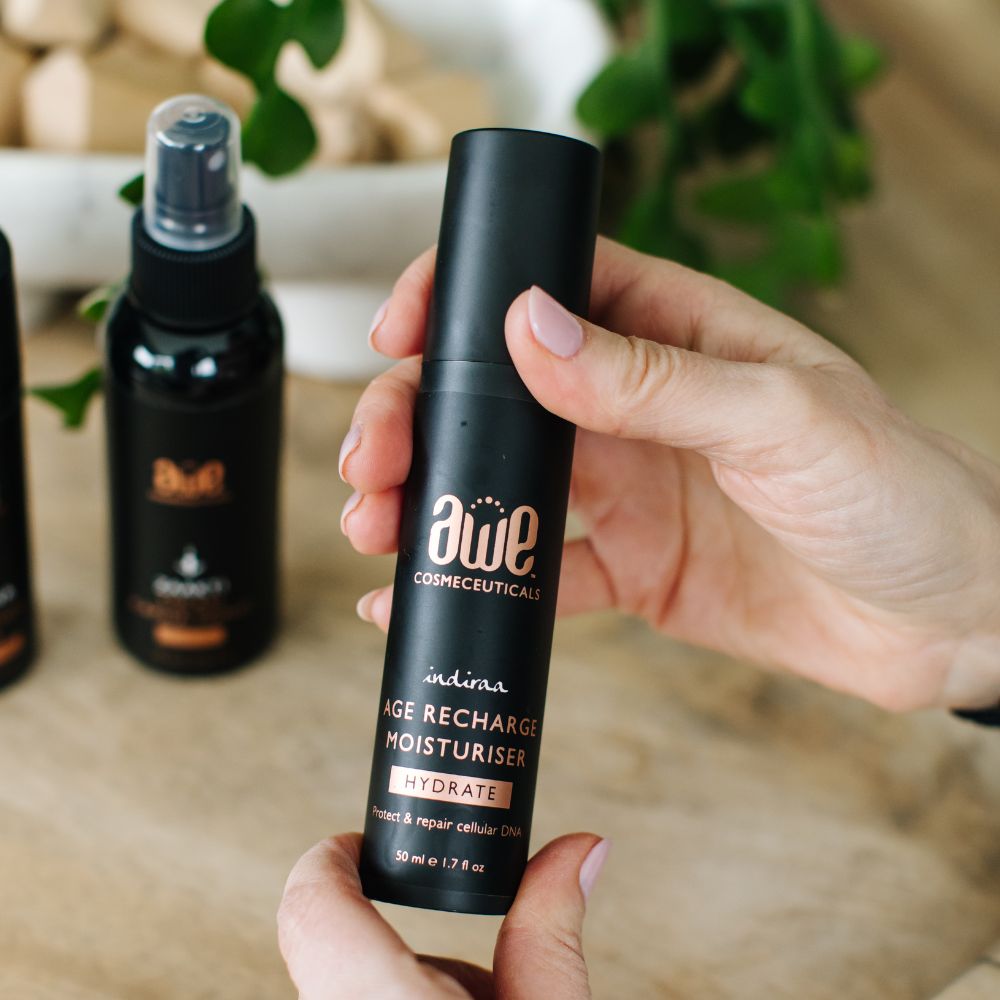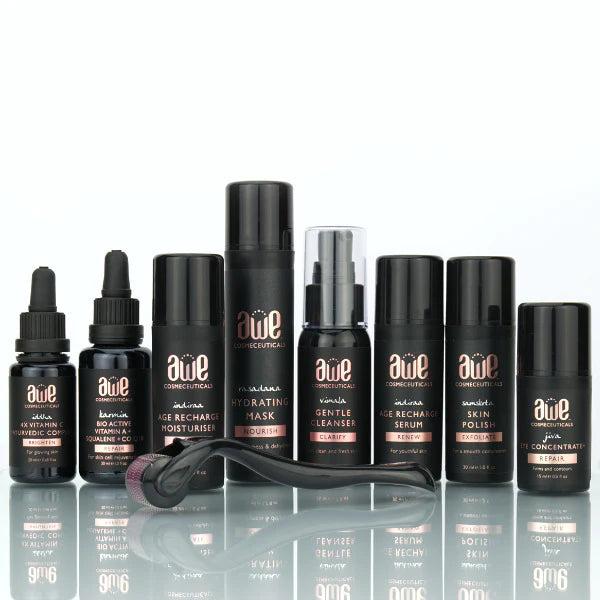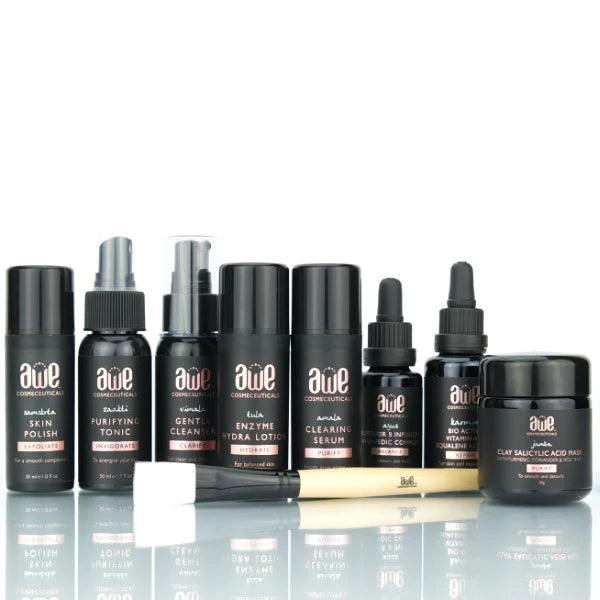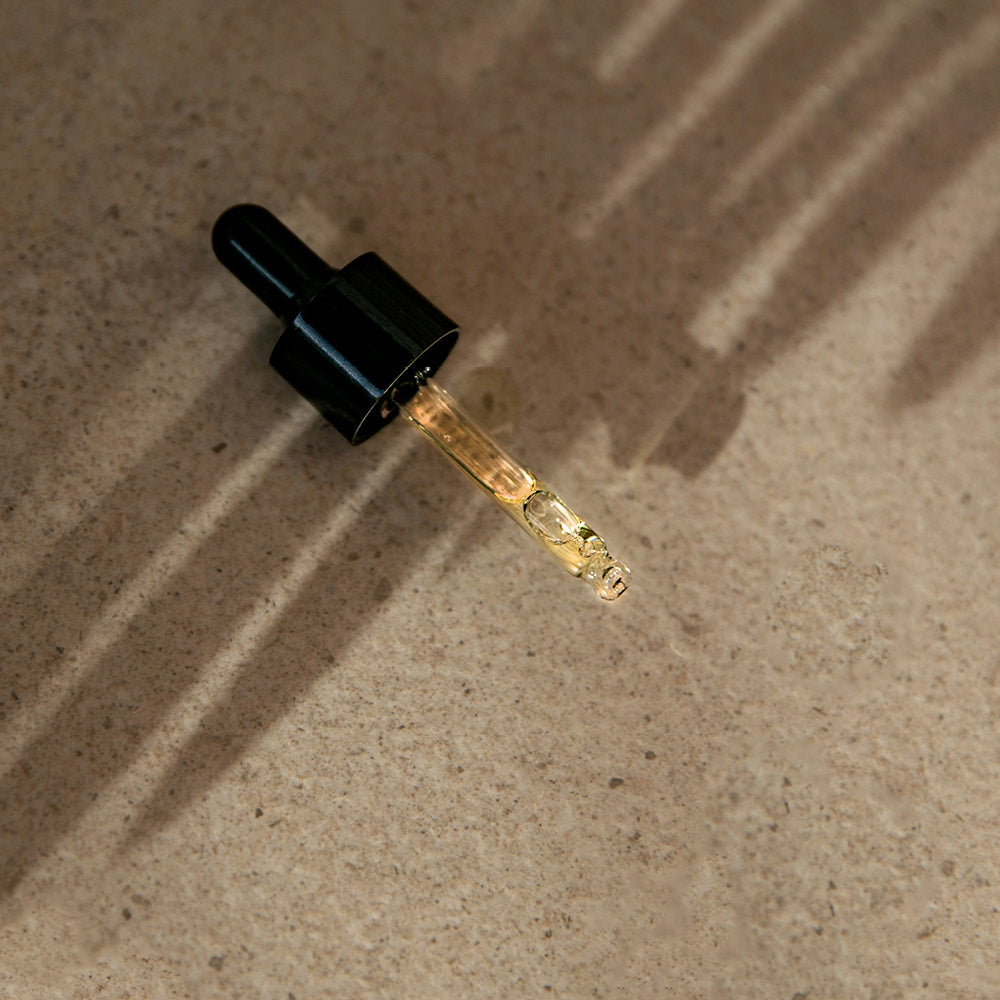This store requires javascript to be enabled for some features to work correctly.
Collagen
Collagen is the major protein found in the skin. It is tough and fibrous, it is the primary constituent in collagenous connective tissue. Collagen is produced by fibroblasts (specialised cell). Unlike elastin, collagen is not intended to stretch, it provides the skin with tensile strength.
Cosmeceutical
A skin care product containing biologically active ingredients, which have a physiological effect on the skin. The term ‘cosmeceutical’ was coined by dermatologist, Dr Albert Kligman nearly 30 years ago.
Dermis
The dermis is the layer of the skin under the epidermis, it consists of two layers the reticular layer and the papillary layer. The papillary dermis is the upmost layer which is in contact with the epidermis; it contains some collagen and elastin fibres, lymphatic vessels, blood vessels and connective tissue cells. The reticular layer consists of fewer cells, however the bundles of collagen and elastin are much stronger and more fibrous. This is the layer of the skin which provides the most strength.
Desquamate
The process of desquamation involves the shedding of cells from the upper most layer of the skin, the stratum corneum. It is a very complex process which, if irregular can result in a number of skin conditions. Accelerated desquamation is most notable in skin disorders such as psoriasis.
Elastin
A protein found in connective tissue. Elastin provides skin with its elastic quality of recoiling when stretched.
Epidermis
The epidermis consists of five different layers ; each undergoing further changes and keratinisation as they leave the inner most layer, stratum basale, until they reach the outer most layer (stratum corneum), ready for desquamation. The epidermis is composed of keratinocytes, corneocytes and lahgerhans cells. The rate at which cells turn over to replace themselves is partly related to age; for example, a young person can have full renewal of the stratum corneum in as little as 14 days and up to over 35 days in those above age 50. Many skin conditions arise as a result of irregularity in this mechanism.
The epidermis is constantly changing and what happens on the surface of the skin, will affect the dermis as these are essentially one unit.
Fibroblast
A cell found in connective tissue, which produces connective tissue components such as, collagen and elastin.
Hyperkeratinisation
This problem arises from the decrease in cellular desquamation of corneocytes and the increased cohesion of these cells. A number of factors may contribute to this condition.
Keratin
This is a fibrous protein present in the corneocytes of the epidermis, hair and nails. As cells migrate upwards toward the outer layer, their keratin content increases, hence the name ‘keratinisation’. Keratin forms a protective barrier, due to its strong matrix structure.
Liposome
A vesicle consisting of a lipid bi layer, it is designed to act as a carrier depositing an active ingredient into the skin. Liposomes are often made from naturally derived phospholipids and therefore cause no irritation and are not harmful.
Melanin
A pigment formed in the melanocyte. It is a complex molecule of which the basic unit is an amino acid, tyrosine.
Melanocyte
A cell which from which the skin pigment melanin is formed. The melanocyte provides pigment to approximately 35 keratinocytes; the association between the two is the epidermal melanin unit.
Sebaceous gland
These glands are found all over the body, except for the palms of the hands and feet. The number and size of glands vary according to location on the body and the presence of hair follicles. The follicle has a sac like appearance and contains keratin cells, sebum and bacteria; the gland opens onto the skin via a pore (opening). Most pores are not visible, however some can be larger. Pores are always associated with either a sebaceous gland or a sweat gland.
Sebaceous glands and their by products are implicated in the pathogenesis of acne.
Sebum
An oily substance produced by the sebaceous gland; secretion does vary with age and is hormonally related. Sebum itself does not provide any known benefit in regard to the skin’s acid mantle or moisturisation.
Subcutaneous layer
Positioned under the dermis, the subcutaneous layer consists chiefly of adipose cells, it is essentially fatty tissue.
Read more...
Your store hasn’t published any blog posts yet. A blog can be used to talk about new product launches, tips, or other news you want to share with your customers. You can check out Shopify’s ecommerce blog for inspiration and advice for your own store and blog.
Your store hasn’t published any blog posts yet. A blog can be used to talk about new product launches, tips, or other news you want to share with your customers. You can check out Shopify’s ecommerce blog for inspiration and advice for your own store and blog.
Your store hasn’t published any blog posts yet. A blog can be used to talk about new product launches, tips, or other news you want to share with your customers. You can check out Shopify’s ecommerce blog for inspiration and advice for your own store and blog.
